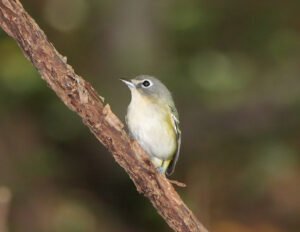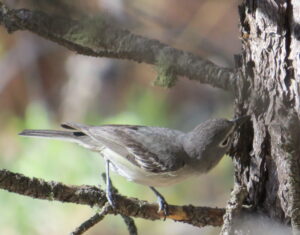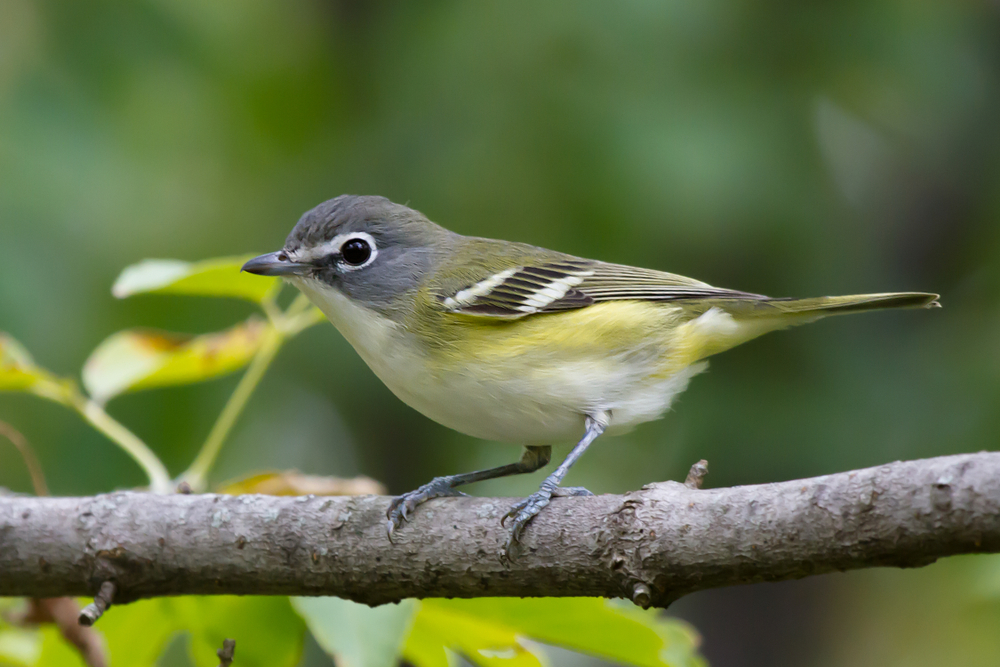Blue-headed Vireo, Vireo solitarius
Bill Rowe
Once again, in May we’ll stick with “migrant-only” birds, then move to more of our nesting residents in the summer. This week’s migrant gives us a chance to introduce another whole family: the vireos, of which Missouri has seven species. Though generally common and widespread, they are little known outside of birding circles—so if you announce that you just saw a Blue-headed Vireo passing through your yard, you may be asked, “What the heck is a vireo?” The answer is that it’s a little bird of either the shrubbery or the treetops, rather like a warbler but unrelated to them, with a thicker bill and not so jumpy. The word itself is from a Latin verb (literally “I am green”), but the green on most of our vireos is just on the back. The Blue-headed, with its handsome colors, can be seen throughout May as it moves through the trees along with other migrants like warblers and flycatchers, and resident birds like chickadees. It is headed for Canada, the northern states, and the Appalachian mountains, in all areas preferring extensive mature forest, which can be coniferous or deciduous depending on the region. Like most of our other insect-eating birds, it flies back to warmer areas for the winter; it counts as a “neotropical” migrant, since some keep going as far as Mexico and Central America, but many stop over closer to us, in the southern U.S. The Blue-headed Vireo has two close relatives out west, the Plumbeous Vireo of the Rockies and the Cassin’s Vireo of the Pacific coast, both of which used to be considered part of the same species under the name Solitary Vireo until they were split in the 1990’s. There are many other vireos in the tropics, but the whole family is limited to the Americas.
IDENTIFICATION: The photo above shows two features that help you know it’s a vireo: the thick bill that curves toward the tip both above and below, and the bluish legs. Otherwise, the Blue-headed Vireo is quite distinctive, with a blue-gray head, white “spectacles,” a pure white throat, white wing-bars, and yellow down the sides. Three of our other vireos, all of them breeding birds here, also have wingbars—the White-eyed, Yellow-throated, and Bell’s Vireos—but they have other color patterns of their own and are not likely to be confused with the Blue-headed. As with so many of our small birds, the song of Blue-headed Vireo (a string of several sweet, slurred phrases) is also a giveaway.
ST. LOUIS STATUS: A moderately common migrant both spring (late April and May) and fall (September and October). It would not be a complete surprise to find one in winter, as has happened a few times elsewhere in Missouri.
Learn more and listen to the songs and calls of Blue-headed Vireos here.


Fall bird, a bit less colorful
Photo Credit: Al Smith
Closely-related Plumbeous Vireo,
Colorado; nearly all gray
Photo Credit: Bill Rowe




